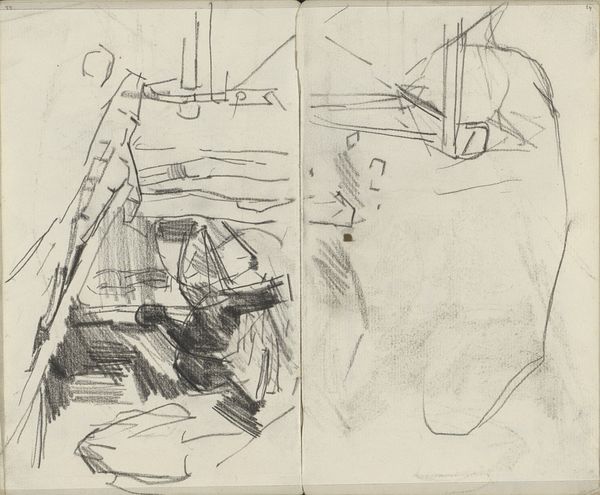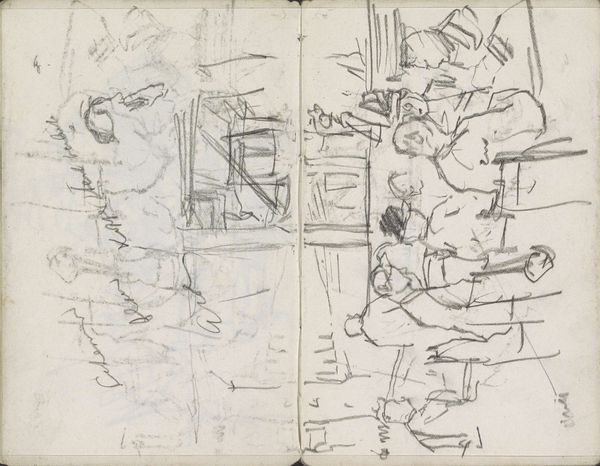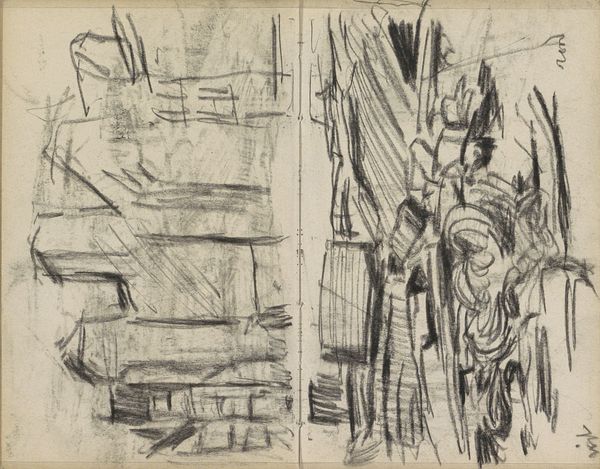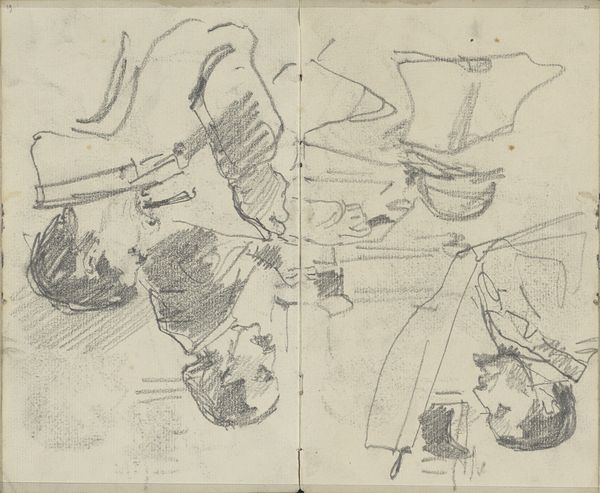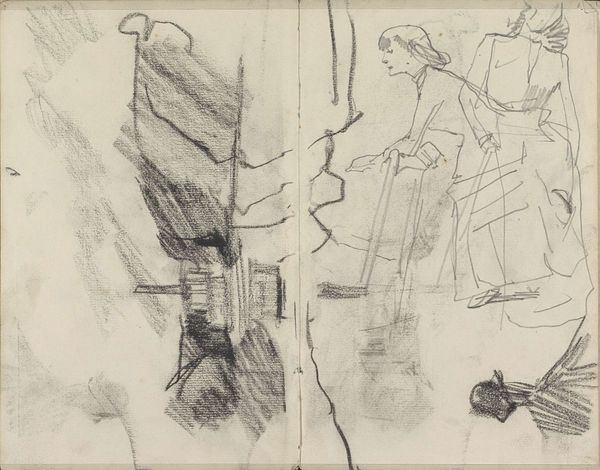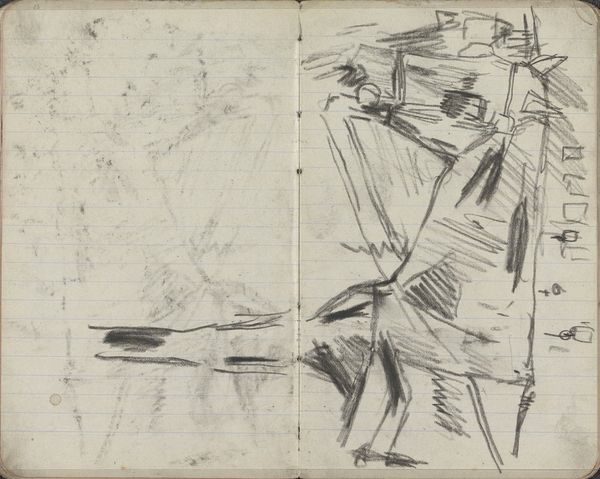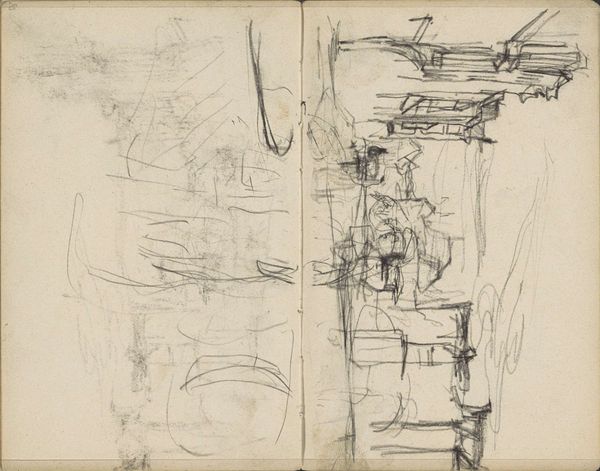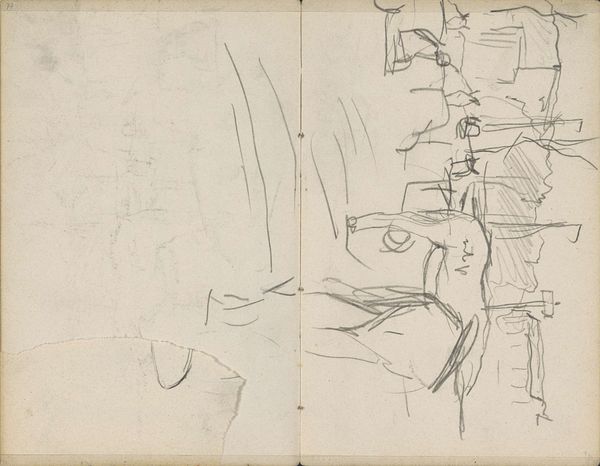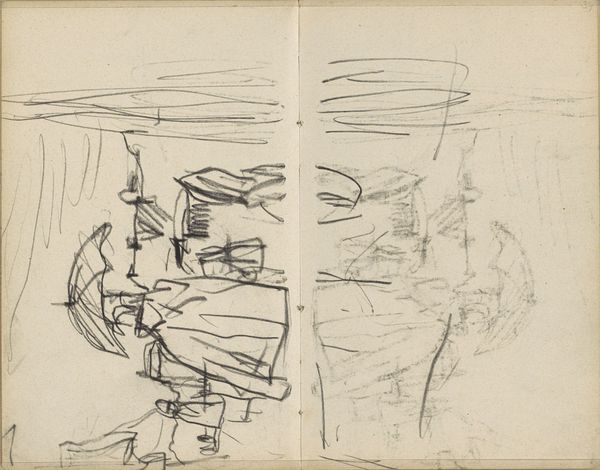
Studieblad met een zittende man en grazende paarden Possibly 1881 - 1883
0:00
0:00
georgehendrikbreitner
Rijksmuseum
drawing, paper, graphite
#
portrait
#
drawing
#
impressionism
#
paper
#
horse
#
graphite
#
genre-painting
#
realism
Copyright: Rijks Museum: Open Domain
Curator: This drawing, currently held at the Rijksmuseum, is titled "Studieblad met een zittende man en grazende paarden," which translates to "Study Sheet with a Seated Man and Grazing Horses." It is attributed to George Hendrik Breitner, possibly dating from 1881 to 1883. It's done in graphite on paper. Editor: My first impression is one of restless energy. The lines are quick, almost frenetic, and there's a sense of movement conveyed, despite the figures appearing relatively still. Curator: Indeed. Breitner's technique here is fascinating. The swiftness you observe isn't carelessness; it is in line with Impressionist principles. The immediacy allows us access to the artist's raw perception. Note how line quality varies, thicker to define form, thinner for shading or suggesting distance. He captures the essence of the subject rather than providing a photorealistic representation. Editor: Yet, these aren't idyllic grazing horses one might expect from Impressionism. The seated man seems to carry a weight, mirrored in the somewhat heavy, downward pull of the horses' forms. Breitner, coming from a background steeped in realism, may be using these subjects to evoke more than pastoral pleasure. What socio-economic circumstances might be affecting the artist's depictions of working men and animals within Dutch society during that time? Curator: That's a sharp observation. Consider Breitner's focus on urban life, his empathy towards the working class. Here, it's more nuanced. The use of graphite allows for stark contrasts, highlighting a certain somber quality perhaps hinting at the hardships experienced. The composition—figures crammed onto a single sheet—underscores this idea of limited space and resources. Editor: Exactly. It evokes questions of access to land, of working conditions, and the relationship between humans and animals laboring together. Perhaps the rapid lines even suggest a certain anxiety or pressure. The figures appear confined to the sketch, trapped in the graphite medium itself. The aesthetic presentation is secondary to the subject's implicit message. Curator: I appreciate how you contextualize the aesthetic within socio-historical frameworks, making the reading even richer. The image moves beyond mere formalism. Editor: It's in those blurred lines between technique and narrative where art truly comes alive, prompting reflection on our world, past and present. Thank you!
Comments
No comments
Be the first to comment and join the conversation on the ultimate creative platform.

